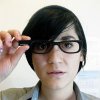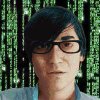Buster's Uncle
AC2 Owner
If creating/modifying graphics doesn’t interest you I doubt this will.
My first purpose here is to give potential graphics guys a leg up, so I have to go into torturous detail to be really helpful, as I don’t know what they do or do not already know how to do. I don’t have a sophisticated graphics set-up at all, and do a lot the hard way in simple, common programs, but that makes it more universal, albeit perhaps often extraneous to someone with PhotoshopUltimateSuper 2020.
You have been warned.
So, while working on the Vikings (see the Alt. Official Factions thread for the file) today, I started a little status report with a name suggestion to send Darsnan, but things went pretty smoothly, and it turned into running notes to send with the graphic instead…
It occurred to me that a few months ago while I was a lurker looking for information about various things I wanted to learn to do, I would have loved it if someone had posted about their creation process in really boring detail, naming programs used and tools, and what-not.
And I thought that the bulk of the email [with the blow-by-blow I didn’t waste Darsnan’s time on added in brackets] would make a start.
So I’m going to try to describe the entire actual creation of a faction graphic- we’re in for a long post(s)...
I hope my process will be at least of some interest to any other artists currently active, too- and that they’ll feel free to do the same, and also post here on any miscellaneous graphics issue they want. The next time I do some random graphic myself, this is where I plan to post it.
***
[Darsnan had suggested a name, Ulrik Magnussen, that sounded, not Finnish to me, but Norwegian. (Graphics stuff is coming- it’s all connected, anyway.)]
A Finnish name site was first hit when I looked. Because the original subject was apparently named Jim, I chose a j name, Jali (yahlee), for no Jim-looking equivalent at hand, its exoticness and that it doesn’t sound as much like a chick’s name as many.
Magnus was first in the M’s, so I’d say Jali Magnus was a lock, if you’ve nothing to add. Easy to remember, spell and type, too.
[I’d already cranked up the contrast on the bases he’d sent me this morning in Photoshop. They were Network Node’s work, and like a lot of his bases, pretty and well-designed, but to my eye, too pastel-looking to look realistic in the game. Then I selected the lot and pasted them into the copy of the whole Pirates .pcx I’d previously pasted into MS Paint. I use paint for this because it’s not something Photoshop 5 is any good for- Paint lets you move your paste around before you drop it.
[Then I opened the blank .pcx with the empty AC graphics boxes that Maniac had posted sometime in the past in Photoshop (all I began using Photoshop for was opening and saving, and did all the work pasting back and forth between Paint and Lexmark Photo Editor, which complement each other nicely used this way- if either did color manipulation I’d have never gone to the trouble to learn how to use Photoshop). I zoomed on the datalink leaderhead box and selected/copied it. I switched to a second copy of Paint in which was waiting the portrait I’d prepared. (A blow-by-blow of that kind of thing is enough for its own post later.) I pasted in the box from blankpcx.pcx, right-clicked the sample tool in the middle to make the .pcx’s background color this copy of Paint’s background color. I then turned off “Draw Opaque” and hit [control z] to undo and make the purple-filled box go away. I then [control w]ed to resize the image- there were several minutes of trail and error before I found 55% to be ideal for getting what I wanted of the figure to fit in the diplomacy box at what I judged was a good size for the game- ideally you want to get the figure somewhere roughly about the size in the frame of the official factions. So now I had the picture in front of me sized like I wanted with the box it had to fit in around it- I selected what was inside the box and [control c]]ed. Now it was time for the scan lines.
(I think I’ve now spent more time preparing this essay than I did assembling the faction graphic- I’m going to post this much and continue later.
Next up: manual scan-lines with an old edition of Photoshop that lacks an automatic function to do it for me. I’ll probably describe how to do it the really hard way with only Paint and any program that will adjust contrast, too.)
My first purpose here is to give potential graphics guys a leg up, so I have to go into torturous detail to be really helpful, as I don’t know what they do or do not already know how to do. I don’t have a sophisticated graphics set-up at all, and do a lot the hard way in simple, common programs, but that makes it more universal, albeit perhaps often extraneous to someone with PhotoshopUltimateSuper 2020.
You have been warned.
So, while working on the Vikings (see the Alt. Official Factions thread for the file) today, I started a little status report with a name suggestion to send Darsnan, but things went pretty smoothly, and it turned into running notes to send with the graphic instead…
It occurred to me that a few months ago while I was a lurker looking for information about various things I wanted to learn to do, I would have loved it if someone had posted about their creation process in really boring detail, naming programs used and tools, and what-not.
And I thought that the bulk of the email [with the blow-by-blow I didn’t waste Darsnan’s time on added in brackets] would make a start.
So I’m going to try to describe the entire actual creation of a faction graphic- we’re in for a long post(s)...
I hope my process will be at least of some interest to any other artists currently active, too- and that they’ll feel free to do the same, and also post here on any miscellaneous graphics issue they want. The next time I do some random graphic myself, this is where I plan to post it.
***
[Darsnan had suggested a name, Ulrik Magnussen, that sounded, not Finnish to me, but Norwegian. (Graphics stuff is coming- it’s all connected, anyway.)]
A Finnish name site was first hit when I looked. Because the original subject was apparently named Jim, I chose a j name, Jali (yahlee), for no Jim-looking equivalent at hand, its exoticness and that it doesn’t sound as much like a chick’s name as many.
Magnus was first in the M’s, so I’d say Jali Magnus was a lock, if you’ve nothing to add. Easy to remember, spell and type, too.
[I’d already cranked up the contrast on the bases he’d sent me this morning in Photoshop. They were Network Node’s work, and like a lot of his bases, pretty and well-designed, but to my eye, too pastel-looking to look realistic in the game. Then I selected the lot and pasted them into the copy of the whole Pirates .pcx I’d previously pasted into MS Paint. I use paint for this because it’s not something Photoshop 5 is any good for- Paint lets you move your paste around before you drop it.
[Then I opened the blank .pcx with the empty AC graphics boxes that Maniac had posted sometime in the past in Photoshop (all I began using Photoshop for was opening and saving, and did all the work pasting back and forth between Paint and Lexmark Photo Editor, which complement each other nicely used this way- if either did color manipulation I’d have never gone to the trouble to learn how to use Photoshop). I zoomed on the datalink leaderhead box and selected/copied it. I switched to a second copy of Paint in which was waiting the portrait I’d prepared. (A blow-by-blow of that kind of thing is enough for its own post later.) I pasted in the box from blankpcx.pcx, right-clicked the sample tool in the middle to make the .pcx’s background color this copy of Paint’s background color. I then turned off “Draw Opaque” and hit [control z] to undo and make the purple-filled box go away. I then [control w]ed to resize the image- there were several minutes of trail and error before I found 55% to be ideal for getting what I wanted of the figure to fit in the diplomacy box at what I judged was a good size for the game- ideally you want to get the figure somewhere roughly about the size in the frame of the official factions. So now I had the picture in front of me sized like I wanted with the box it had to fit in around it- I selected what was inside the box and [control c]]ed. Now it was time for the scan lines.
(I think I’ve now spent more time preparing this essay than I did assembling the faction graphic- I’m going to post this much and continue later.
Next up: manual scan-lines with an old edition of Photoshop that lacks an automatic function to do it for me. I’ll probably describe how to do it the really hard way with only Paint and any program that will adjust contrast, too.)





